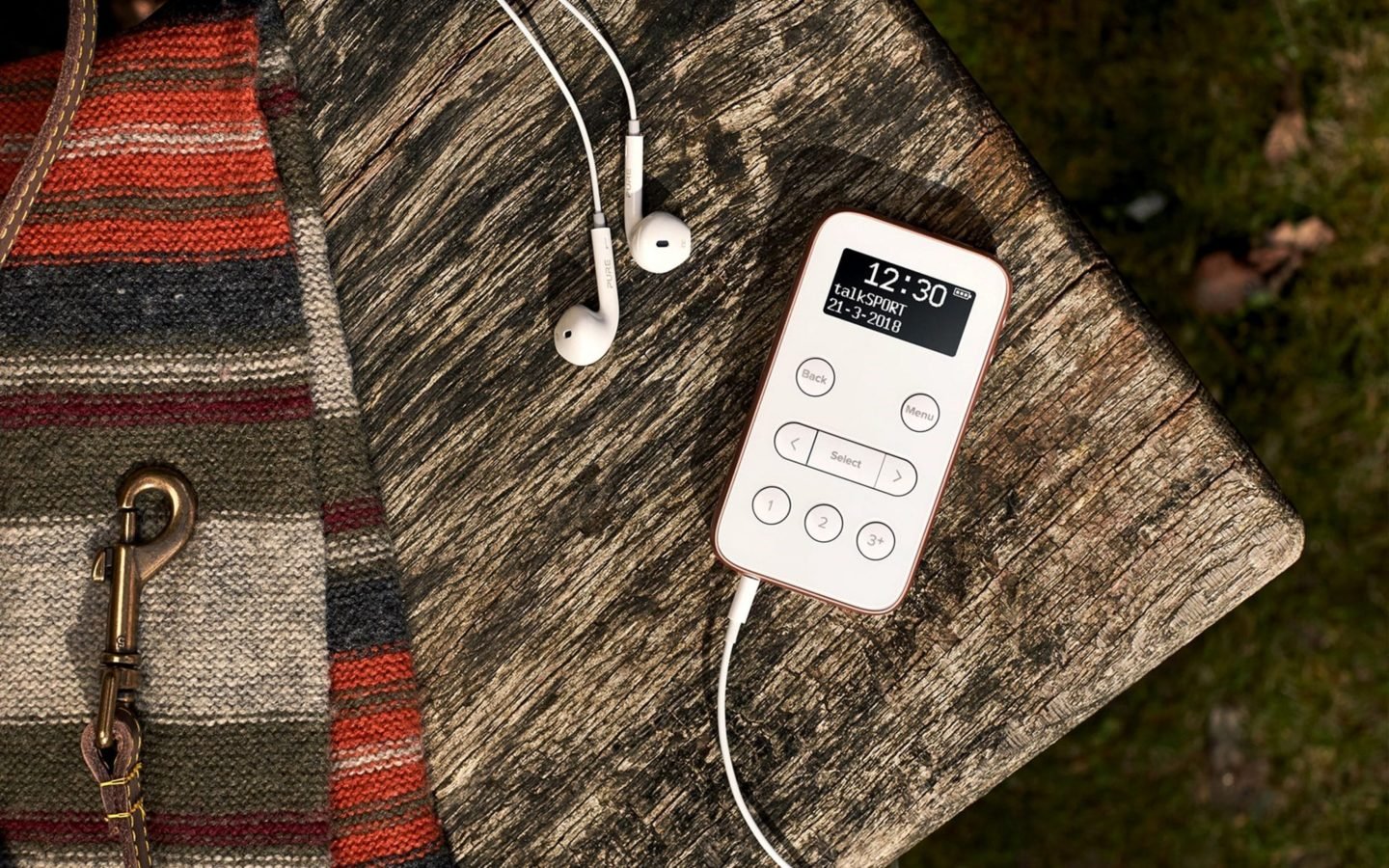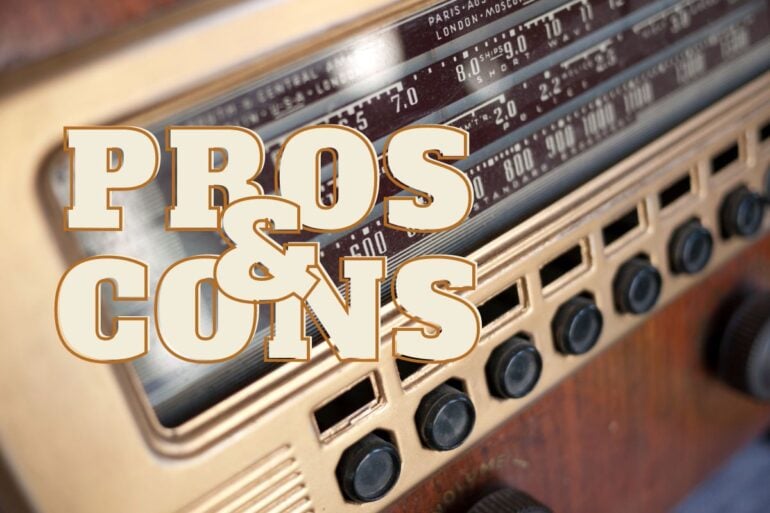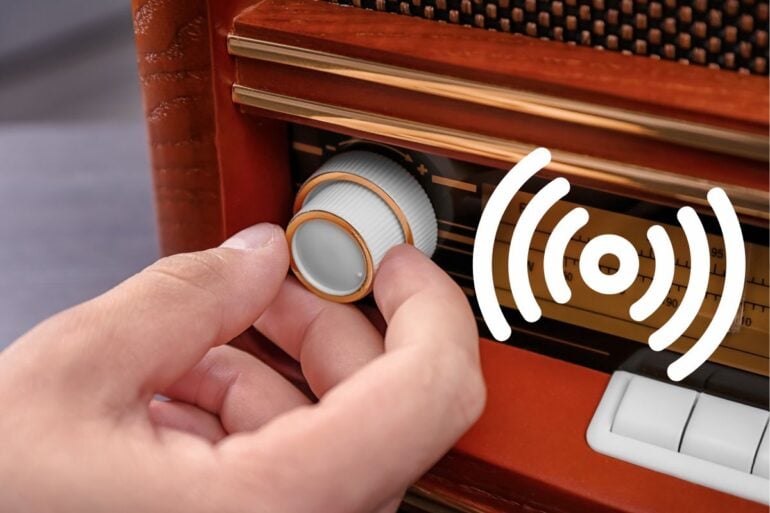What is DAB radio?
Contributing Editor
How do you listen to radio? Some people tune into content on the internet, others rely on the tried and trusted FM signal, and some prefer the simplicity and clarity of DAB radio.
Despite being around for many years, the question, “What is DAB radio?” is still common today.
After all, many of today’s consumers listen to songs and programs from their cars and home radios without really thinking about how that audio gets to them or where it comes from.
DAB radio, or “digital” radio, transformed the airwaves as we knew them.
The technology is to FM and AM radio what CDs were to vinyl records. DAB radio provided good audio quality, reduced crackling and distortion, and made it more efficient for companies to transmit data to their listeners.
Here, we’re going to explore the history of DAB radio, and what this innovation meant to the transformation of radio as a genre of entertainment.
Here’s your guide to DAB audio: past, present, and future.
What does DAB stand for?
Your intro to DAB…
Let’s start with the most obvious question: “What does DAB radio stand for?”
DAB refers to “Digital Audio Broadcasting.”
It’s a way of transmitting audio information through a digital rather than an analog format. While there are other digital radio standards out there, DAB is the one most common in the United Kingdom.
What does DAB radio mean?
To create a DAB signal, analog audio needs to be converted and compressed using a similar format to the MP3s on an iPod or smartphone.
Many of the leading radio stations in the UK today broadcast on both analog and DAB wavelengths to give their customers more freedom of choice.
However, there are digital-only channels out there too.
For most people, DAB radio is a convenient and user-friendly alternative to analog radio. Whenever you switch your device on, it automatically scans for available stations and saves them to your potential playlist.
This means you don’t have to fiddle with a dial to find a program you want to listen to.
DAB radios also come with a convenient display most of the time. This provides listeners with information about the name of the station, artist, and song they’re tuning into.
According to figures from official research, 47.6% of radio listening still happens on AM/FM wavelengths. The future of DAB radio, however, looks bright, with the channel earning 38.1% of listeners.
Despite its obvious potential, DAB radio faces a lot of competition today. It’s not just online streaming and podcasts that present a challenge to the DAB format, either.
Many listeners still prefer their FM/AM stations despite the improved reliability of DAB.

The history of DAB radio
Where it all began…
To honestly answer the question, “What is DAB Radio,” we need to go back to the beginning.
The history of DAB radio for the UK started back in 1990 when the British Broadcasting Corporation (BBC) began conducting experiments into DAB engineering from the Crystal Palace station.
It wasn’t until 1995 that the BBC switched on their DAB service for the first time, transmitting BBC 1, 2, 3, 4, and 5 Live across the London area.
Using a single-frequency network, the BBC found that it could expand its radio stations’ coverage to about 85% of the British population by 2004. However, DAB radio wasn’t an immediate success.
In fact, uptake was incredibly slow. Adding digital receivers to a car was very expensive – and people mainly preferred to stick to their good old FM radio stations instead.
For instance, one of the first companies to create digital radio tuners was the audiophile specialist Arcam, which launched its product for about £700. Not only was the digital radio receiver expensive, but it only captured about 10 stations.
In 2001, a new processing chip meant digital radios could be developed more cost-effectively. Pure released one of the first budget-friendly DAB radios for less than £100 in 2002.
The low price point started to earn the attention of new consumers. Moreover, because the number of digital radio stations available had started to develop steadily, customers saw more of a reason to switch over.
Today, the UK has the world’s most significant digital radio network. Additionally, the average price of a DAB radio has fallen gradually. The cheapest models today often cost less than £20.
Even the UK government has taken steps to encourage the widespread adoption of DAB radio.
In 2009, the government recommended switching to DAB in an official report and claimed that it would be performing a “switchover” in 2015. However, this plan has been delayed numerous times over the years.
Today, we still haven’t officially gotten rid of AM/FM analog stations.
How does DAB radio work?
The basics…
One of the places where DAB radio has seen the most significant uptake is in modern cars.
Around 90% of the new vehicles sold across the UK today come with DAB radio broadcasting included as standard.
Additionally, even if your car doesn’t come with DAB built-in, it’s easy enough to upgrade with a radio adapter.
Chances are, you’re already interacting with this technology in your daily life. But how does DAB radio work?
A station broadcasting on a DAB frequency creates a digital signal at the same time as its analog signal. These two messages are sent from antennas at the same time, and they’re picked up by HD tuners in a house or car.
The range of a digital signal is much smaller than an analog signal. On the other hand, the compressed sound packet eliminates the noise and interference common with FM and AM wavelengths.
Through DAB signals, customers can almost achieve CD-quality audio while listening to live broadcasts.
Digital signals aren’t just different in terms of their quality. A DAB radio wavelength also differs in the kind of information it contains.
A digital signal will contain metadata packets for the track, album, and artist, as well as the music itself. This information is presented as text when it appears on your radio device.

Is DAB radio better than FM?
So, what makes it an appealing option to customers who already have FM radio in their lives?
When DAB radio first emerged in the UK marketplace, it was intended to solve the problems that FM and AM wavelengths had.
For example, the main reason many people started switching to DAB in recent years is that more channels are available.
FM only has a limited bandwidth available to it. Additionally, for FM stations to work well, they need to be quite far apart so there’s no interference in your sound quality. That means that you’ll probably only be able to find about 15 stations in a single area.
On the other hand, DAB radio sends signals very differently to FM or AM. Instead of a typical radio station, the DAB feed is sent in binary. This means more stations can exist in the same space without reducing audio quality.
There could be as many as 60 stations connected to a single broadcasting tower.
DAB radio signals also provide a more reliable reception. FM stations are only capable of broadcasting on a specific frequency, depending on the position of your antenna.
However, if you have a DAB radio, then your restrictions will be lifted. You can achieve excellent results because you have multiple chances to encounter a reliable signal.
It’s much easier to access the kind of radio experience you want through DAB. However, this listening option isn’t perfect. The signal can have flaws – especially in some regions of the UK.
Usually, digital broadcasting works best in built-up areas, meaning your listening options falter when you hit the countryside.
The UK government has followed in the footsteps of many other countries, stating that it plans to switch FM or “analog” stations off completely. However, it’s very unlikely that this will happen any time soon.
Many leading stations, including the BBC, have claimed they want to keep their FM frequencies longer.
After all, while DAB offers a range of benefits, FM and AM are a helpful safety net. If you ever have a situation where you can’t pick up a DAB signal, you’ll want the reliability of FM – even if the connection is crackly.

What is a DAB radio?
The introduction of DAB+
If you’ve been asking the question: “What is a DAB radio?” for a while now, then you might have come across the term DAB+ in your search for answers.
Before we discuss the future of DAB radio, it’s worth exploring how this advanced version of digital signal processing works.
When DAB technology first arrived in the UK, it used an established and stable audio technology known as MPEG. This was the same tech that FM had been using for decades.
But, as new stations began to launch, the bit rates of MPEG wavelengths had to drop to accommodate more channels in the same space. This means that most stations, including those from the BBC, run at a rate of about 129Kbps.
The history of DAB radio took a major turning point when scientists and engineers decided to start experimenting with a different kind of encoding.
DAB+ wavelengths use HE-AAC encoding, which provides stereo audio in wavelengths as low as 48kbps.
The potential of DAB+ technology is so significant that when it arrived in the UK, the government began making it a requirement for all sets built after 2013.
Unfortunately, for anyone who invested in a DAB radio before the new tech emerged, this meant buying yet another upgrade.
Although DAB+ sets are backward compatible, which means they can also receive DAB stations, the tech doesn’t work the other way around.
A DAB receiver cannot receive DAB+ stations.
As of 2018, 41 countries are broadcasting over DAB radio.
Most of these services use the DAB+ service. Only Ireland, New Zealand, Romania, certain parts of the UK, and Brunei still use a significant number of DAB stations over DAB+.
In many countries, governments plan to switch FM stations entirely over to DAB+, skipping DAB entirely.
Norway was the first country to implement its analog switchoff in 2017.

The future of DAB radio
When DAB radio was designed, it was demonstrated to the public as a life-changing and transformative technology capable of revolutionizing how we listened to radio content.
There have been numerous issues with DAB, including lost signals in rural parts of the country and issues with broadcasting. We still rely heavily on FM radio broadcasting many years after DAB was introduced.
Many of the radio broadcasters around Europe, including the world-famous BBC, backed DAB aggressively when it first appeared.
Despite this, the BBC recently announced that it had changed its mind about switching off analog frequencies, highlighting an unusual reversal in policy.
Although DAB radio hasn’t taken over the world at this point, it is growing increasingly popular across the UK.
The uplift in popularity of digital radio comes from a range of different factors, including the arrival of new stations.
For instance, one of the most popular alternative music stations broadcasting in Manchester and London, Radio X, improved its reach by 26% in 2018.
Many of the traditional radio stations that UK audiences have grown used to over the years are also seeing a massive increase in their digital audiences.
At the end of 2017, the popularity of BBC digital stations grew by about 3% from the year before, and BBC Radio 4 also exceeded the quota required to initiate the switchover to digital for the first time.
If the country ever does go ahead with a complete digital switchover, it will mean that we can no longer access our entertainment and news from an FM or AM frequency. This would be a similar approach to the one that we saw with the television switchover.
However, to launch the change, the BBC and government need to meet specific conditions:
- At least 50% of all radio listeners need to be from digital channels.
- National DAB coverage has to be the same (or almost the same) as FM.

What’s next for your radio?
In 2017, Norway emerged as the first country to eliminate analog radio frequency completely, in favor of going digital. This inspired a lot of countries to start re-assessing their digital-first strategy.
Additionally, in 2018, the UK finally reached the government condition of DAB listenership being greater than FM listenership.
Now that digital radio is more popular than it has ever been, there’s a good chance that the country will begin moving more aggressively towards digital-only broadcasting.
The UK government revealed that it would launch a review of the radio industry at the end of 2019, with a decision to be reached in the middle of 2020.
The government would consider the full range of ways that people typically listen to the radio, including online apps, DAB, and analog.
According to the 2019-2020 U.K. government review of the radio industry, digital radio was making inroads in terms of the number of listeners. The data showed that digital radio was the fastest-growing, accounting for 52% of listeners in 2020.
However, even if the DAB switchover happens, there’s no guarantee that digital radio will be the only way that we get our entertainment.
Although FM and AM might go extinct, consumers can still access internet streams and podcasting applications. The internet can be more expensive if it means that you have to tune into mobile data on your phone or eat up your broadband allowances at home.
If your internet connection isn’t as fast or cost-effective as you’d like, then DAB radio might be the future for you.
The table below shows some stats about digital radio coverage as of 2019 in different countries:
| Country | Digital 1 | Sound Digital | Local DAB | |
| The UK | HomesMajor Roads | 91.7%80.2% | 82.6%72.6% | 91.0%75.2% |
| England | HomesMajor Roads | 94.8%93.9% | 86.7%89.8% | 92.3%85.0% |
| Scotland | HomesMajor Roads | 81.7%45.5% | 69.0%33.6% | 85.4%45.6% |
| Wales | HomesMajor Roads | 67.5%53.3% | 56.9%37.7% | 82.6%60.9% |
| Northern Ireland | HomesMajor Roads | 85.4%86.9% | 56.8%55.0% | 87.5%87.8% |
DAB radio FAQs
Do you still have questions about DAB radio?
See if you can answer them here:
Q: What is DAB radio?
A: DAB radio is an audio broadcast on a digital frequency rather than an AM or FM wavelength.
Q: Is it worth upgrading your car with DAB?
A: Upgrading a car stereo with DAB can be inconvenient. The best thing you can do to save yourself some effort and money is to use a DAB adapter. It’s cheaper and simpler than replacing your car stereo completely.
Q: Internet radio vs DAB: Which is better?
A: There are positive and negative sides to both DAB and internet-based radio. DAB is typically more straightforward as you won’t need to connect to the internet, and you don’t have to worry about streaming allowances.
However, internet radio doesn’t have the same connectivity issues that DAB can sometimes have.
Q: Can a DAB radio receive FM and AM stations?
Usually, the majority of leading radio stations will broadcast on DAB, FM, and AM. Most of the DAB radio devices you’ll find on the market today also have an FM receiver. However, only a few will allow you to pick up AM signals, too.
Q: Do you need Wi-Fi for DAB radio?
A: You don’t need a Wi-Fi connection for a DAB radio – which is one of the things that can make it more convenient than internet streaming. Digital radio is 100% free at the point of use because it uses a digital signal.
Q: Is a DAB radio better than analog?
A: It’s difficult to say for certain whether DAB is better than analog radio – as the answer depends on personal preference.
The main complaint that people have when it comes to DAB radio is that if you do lose your signal, you won’t get the same crackling noise you get on an FM station. Instead, your audio simply cuts out completely.
Q: Is DAB available in my area?
A: Approximately 97% of the UK is currently available to access the DAB and DAB+ networks. This means that if you’ve found this article and you’re living in Britain, you shouldn’t have trouble finding a DAB connection.
You can also check your coverage levels by using a postcode checker online.
Q: What’s the difference between DAB and DAB+?
A: DAB+ is the enhanced version of DAB originally delivered to the UK in 2007. The solution uses a new form of digital encoding, which helps to improve the signal quality and compression of DAB data signals.
Many countries are now adopting DAB+ over the standard DAB radio.
As car technology advances, it’s no secret more companies are switching over to DAB and DAB+-compatibility in newer models. If you’re unsure if your car is one of these models, here’s how you can tell if your car is DAB+ enabled.
You can get the more traditional route and buy the best DAB radio money can buy! You can check out our list of the best 16 DAB radios you can buy now for 2023.
Radio Fidelity: For the love of radio.







